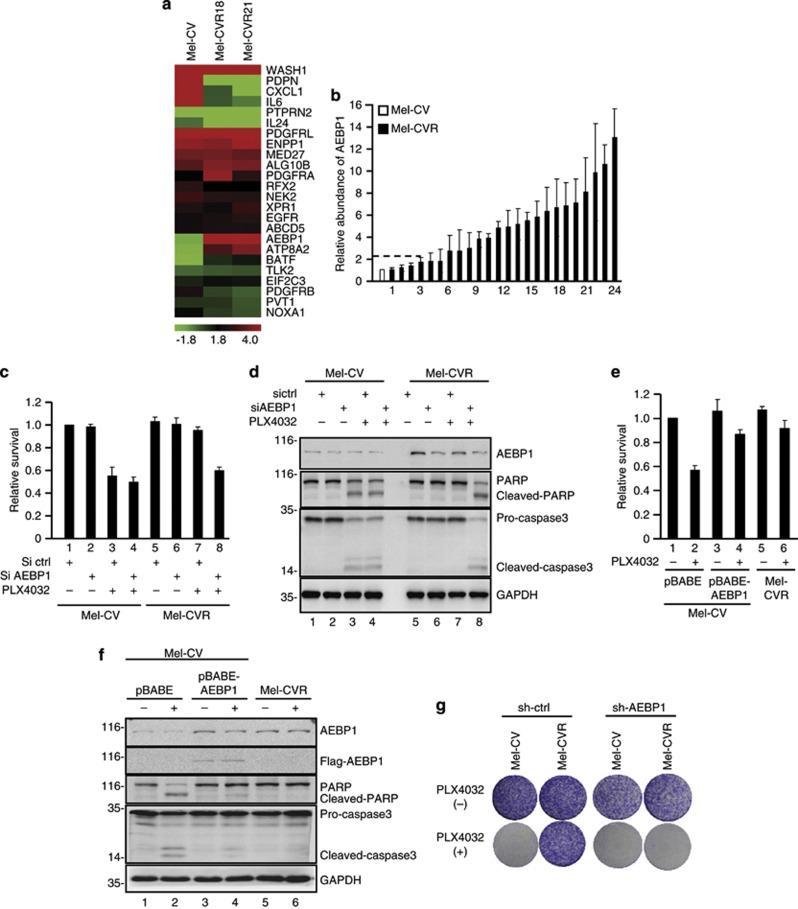Figure 1.
Identification of AEBP1 as a novel PLX4032 resistance-associated gene. (a) Total RNA from Mel-CV parental cell line and two PLX4032-resistant clones (Mel-CVR18 and Mel-CVR21) was individually subjected to cDNA microarray analysis. The filtered microarray data were subjected to unsupervised hierarchical clustering analysis. The metric was set as the Euclidean distance. (b) Real-time RT-PCR analysis of AEBP1 mRNA expression in Mel-CV parental cell line and 24 isolated PLX4032-resistant clones (Mel-CVR1-Mel-CVR24). (c) Mel-CV and Mel-CVR cells were individually transfected with either control siRNA or AEBP1 siRNA. 24 h after transfection, cells were treated with 5 μM PLX4032 for an additional 36 h. Viability of cells was determined using MTT assays by measuring the absorbance at 490 nm in a microplate reader. (d) Mel-CV and Mel-CVR cells were individually transfected with either control siRNA or AEBP1 siRNA. 24 h after transfection, cells were treated with 5 μM PLX4032 or mock control for another 36 h. Cell lysates were then subjected to western blot analysis with the indicated antibodies. (e) Mel-CV cells expressing AEBP1 or control protein and Mel-CVR cells were treated with 5 μM PLX4032 or mock control for 36 h. Viability of cells was determined using MTT assays by measuring the absorbance at 490 nm in a microplate reader. (f) Mel-CV cells expressing AEBP1 or control protein and Mel-CVR cells were treated with 5 μM PLX4032 or mock control for 36 h. Cell lysates were analyzed by western blot analysis with the indicated antibodies. (g) Long-term colony formation assay of Mel-CV and Mel-CVR cells with and without stable knockdown of AEBP1. Cells were grown in the absence or presence of 3 μM PLX4032 for 3 weeks. All dishes were fixed at the same time, stained and photographed

